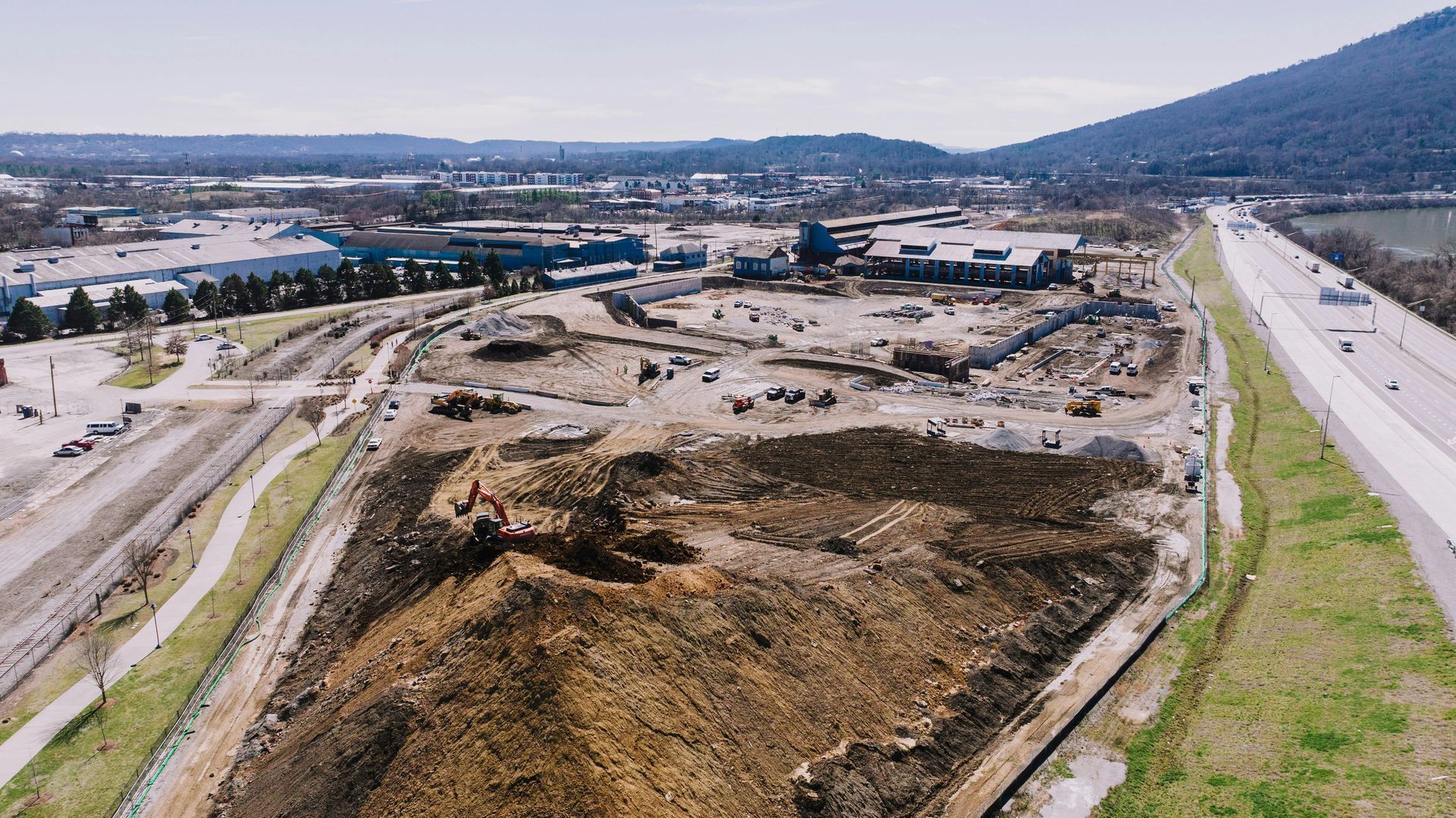Zoning vs. Land Use: What’s the Real Difference?
Think of zoning as the rulebook your town uses to decide what types of buildings and activities fit where—like keeping factories out of quiet neighborhoods. Land use is the bigger picture, showing how all these zones work together to shape your community’s vibe. Zoning sets the specific “dos and don’ts,” while land use maps out overall plans for growth and balance. If you’re curious how this applies in your area, check out our service areas. Stick around, and you’ll see how these two play a team game to keep things running smoothly.
Key Takeaways
- Zoning is a set of legal rules that regulate land use types and development in specific areas.
- Land use refers broadly to how land is utilized, such as residential, commercial, or industrial purposes.
- Zoning enforces specific land use plans by setting detailed regulations to guide community growth and development.
- Land use planning sets overarching goals, while zoning provides the regulatory framework to implement those goals.
- Proper alignment of zoning and land use ensures balanced growth, community harmony, and prevents land use conflicts.
Defining Zoning and Its Purpose
Even if you’ve never heard the term “zoning” before, you’ve probably seen it in action around your neighborhood. Zoning definitions might sound a bit technical, but really, they’re just the rules that decide what kind of buildings and activities can happen where. Think of zoning as your town’s way of keeping things organized—making sure homes aren’t suddenly surrounded by noisy factories or giant shopping malls. The main zoning objectives are pretty straightforward: protect your community’s safety, encourage a good mix of places to live, work, and play, and help neighborhoods keep their unique vibes. When you understand zoning, you see it’s like a neighborhood’s invisible guide, helping everything fit just right. For a deeper dive into how professionals help interpret and apply these rules, check out our blog on the benefits of hiring a zoning expert in Houston, TX.
Understanding Land Use Categories
While zoning sets the rules for where things can go, land use categories tell you what kind of activities actually happen in those places. When you get to know land use classifications, you see how communities shape themselves through land use planning. These categories help everyone understand what’s expected in different spots, so you feel connected to your neighborhood’s vibe. Knowing these helps you see the bigger picture—how each area supports daily life and work. It’s like a puzzle where every piece needs its place. When you understand this, you’re part of a community that plans smartly and lives well together. Learn how these concepts influence property evaluations in our Phase 1 Environmental Site Assessment guide.
Here’s a quick peek at common land use categories you might find:
| Residential | Commercial | Industrial |
|---|---|---|
| Homes | Shops | Factories |
| Apartments | Offices | Warehouses |
| Neighborhoods | Restaurants | Restaurants |
How Zoning Regulations Are Established
You might wonder who actually decides the rules about zoning in your neighborhood. Well, local governments take the lead, but they don’t do it alone—they want your input, too.
Local Government Role
Local governments play a huge role in shaping how your neighborhood looks and feels, and zoning rules are a big part of that. Think of local governance as the team behind the scenes, setting the stage for your daily life. They decide which areas are for homes, shops, or parks, making sure everything fits together smoothly. This isn’t done in a bubble—they rely on community engagement to understand what you and your neighbors want. So, while they draw up zoning rules, they keep your input in mind to create spaces where everyone feels at home. It’s like crafting a recipe with your favorite ingredients to make the perfect neighborhood stew—local leaders mix rules with your needs to keep the community thriving. If you're thinking of building or subdividing land, our plat preparation services can help you align with these regulations.
Public Participation Process
Zoning rules don’t just appear out of thin air—they’re shaped by a process that welcomes your voice and your neighbors’ opinions. Public engagement and stakeholder involvement are key here. When new zoning regulations are proposed, you get to weigh in through meetings, surveys, or public hearings. It’s like a community chat where everyone’s ideas matter. This process helps guarantee zoning fits the neighborhood’s needs and feels fair.
| Step | What Happens |
|---|---|
| Proposal | Officials draft zoning changes |
| Public Notice | You and others get informed |
| Engagement | Meetings, hearings, and feedback collection |
| Decision | Authorities review input, then finalize rules |
The Relationship Between Zoning and Land Use
Even though zoning and land use might sound like the same thing, they actually play different but connected roles in shaping how a neighborhood looks and works. Think of land use as the big picture—it’s all about land use planning and land use strategies that decide what types of activities happen where. Zoning steps in as the rulebook, with zoning enforcement making sure those plans stick. You’ll find zoning implications everywhere, from where shops pop up to where kids play. Sometimes, land use conflicts sneak in, like when a noisy bar clashes with nearby homes. That’s where zoning flexibility can save the day, adjusting rules to keep everyone happy. When you understand how zoning and land use work together, you see a community that balances growth and harmony. It’s like a well-rehearsed dance—you’re part of the rhythm, making the place you live feel just right. If you're unsure how to start navigating these issues, see our list of key questions to ask when hiring a zoning consultant.
Examples of Zoning in Urban Development
When you walk through a city, you mightn't notice it, but there’s a whole system behind where buildings go and what they’re used for. Zoning rules decide this, shaping neighborhoods in ways that keep things running smoothly. Take mixed use developments, for example—they’re like mini neighborhoods themselves, blending shops, offices, and homes in one spot. These areas let you live close to where you work or grab a coffee, creating a real sense of community. Sometimes, though, a project doesn’t fit the standard rules. That’s where zoning variances come in—they’re special permissions that let developers bend the rules a bit to make something unique happen, like adding a taller building or a funky café in a residential zone. Before making big property decisions, consider working with a licensed land surveyor before purchasing land to ensure everything aligns with current zoning and planning.
Impact of Land Use on Community Planning
You mightn't realize it, but how land is used really shapes how a community grows and feels. When planners decide where homes, parks, or shops go, they’re thinking about more than just space—they’re crafting a whole neighborhood vibe. Let’s see how these choices can make your town feel just right or a bit off.
Land Use Influences Growth
Since land use shapes how neighborhoods grow and change, it plays a huge role in community planning. When you think about it, the way land gets used directly impacts how your town or city evolves.
Here’s what you should keep in mind:
- Sustainable growth: Land use helps balance economic development and environmental impact, making sure your community thrives without harming nature.
- Community needs and infrastructure planning: It guides where schools, roads, and parks go, so everything fits your neighborhood’s lifestyle.
- Demographic trends and housing diversity: Land use affects who lives where, helping prevent urban sprawl and encouraging a mix of homes for all kinds of families.
If you're managing a development or zoning project, our project management services help keep every part moving forward smoothly and in compliance.
Community Design Considerations
Although land use might sound like a dry topic, it actually shapes how your community feels and functions every day. When planners focus on community aesthetics and sustainable design, they create places where you want to hang out. Think green spaces, mixed use developments, and pedestrian accessibility—all working together to boost neighborhood cohesion. Urban density isn’t just about crowding; it’s about smart growth that supports public transportation and safety measures, making your daily commute smoother and your streets safer. Cultural considerations guarantee the community reflects everyone’s stories and traditions, helping you feel truly at home. If you're in need of surveying assistance, don’t miss our trusted land surveying referrals.
Challenges and Conflicts Between Zoning and Land Use
When zoning rules don’t quite match up with how land is actually used, things can get messy pretty fast. You might find yourself caught in zoning conflicts or land use disputes that turn neighbors into foes. These regulatory challenges often spark community opposition, especially when development pressures clash with environmental concerns. It’s like everyone’s playing a different game with the same board.
Here’s what usually trips people up:
- Compliance issues pop up when landowners want to bend the rules, causing legal battles.
- Development pressures push for growth, but zoning might say, “Not so fast,” leading to frustration.
- Environmental concerns sometimes get sidelined, stirring community pushback and more disputes.
You’re not alone if this sounds complicated—many communities wrestle with these conflicts. Understanding these challenges helps you see why zoning and land use need to work hand in hand, or things just spiral into chaos. To stay informed and take proactive steps, browse our full
Phase 1 Environmental Site Assessment Guide.
Frequently Asked Questions
How Do Zoning Laws Vary Between Countries?
You’ll find zoning regulations differ worldwide based on local priorities and culture. Land use rules reflect community values, so you’ll see unique approaches that shape your neighborhood’s character and help you feel connected to where you live.
Can Zoning Changes Increase Property Values?
You’ll find zoning impacts can boost property values by allowing new uses or developments, making your property investment more attractive. Staying informed and connected with your community helps you navigate these changes confidently and successfully.
What Role Do Public Hearings Play in Zoning Decisions?
Imagine a room buzzing with voices—public hearings invite you to join in. Your public engagement shapes zoning decisions, as community feedback builds a shared vision, ensuring your neighborhood grows in ways everyone feels connected to and proud of.
How Does Zoning Affect Environmental Sustainability?
You’ll find zoning regulations shape how communities manage environmental impact by guiding sustainable development and promoting land conservation. Together, you and your neighbors can support these efforts, creating a healthier, more connected place to live.
Are There Digital Tools for Mapping Zoning and Land Use?
You know what they say, "A picture is worth a thousand words." You’ll find digital mapping and zoning software, using GIS technology, perfect for land use analysis—helping you belong to a community shaping sustainable spaces.
Final Thoughts
So, zoning and land use might sound like twins, but they play different roles in shaping your neighborhood. Think of zoning as the rulebook and land use as the game itself—they work together, but sometimes they clash. Knowing how they connect helps you see why some places look the way they do. Next time you stroll around town, you’ll spot their dance in every street corner—kind of like an urban soap opera, just less dramatic and way more practical! If you have questions about how zoning or land use affects your property, feel free to
contact us—we’re here to help.


